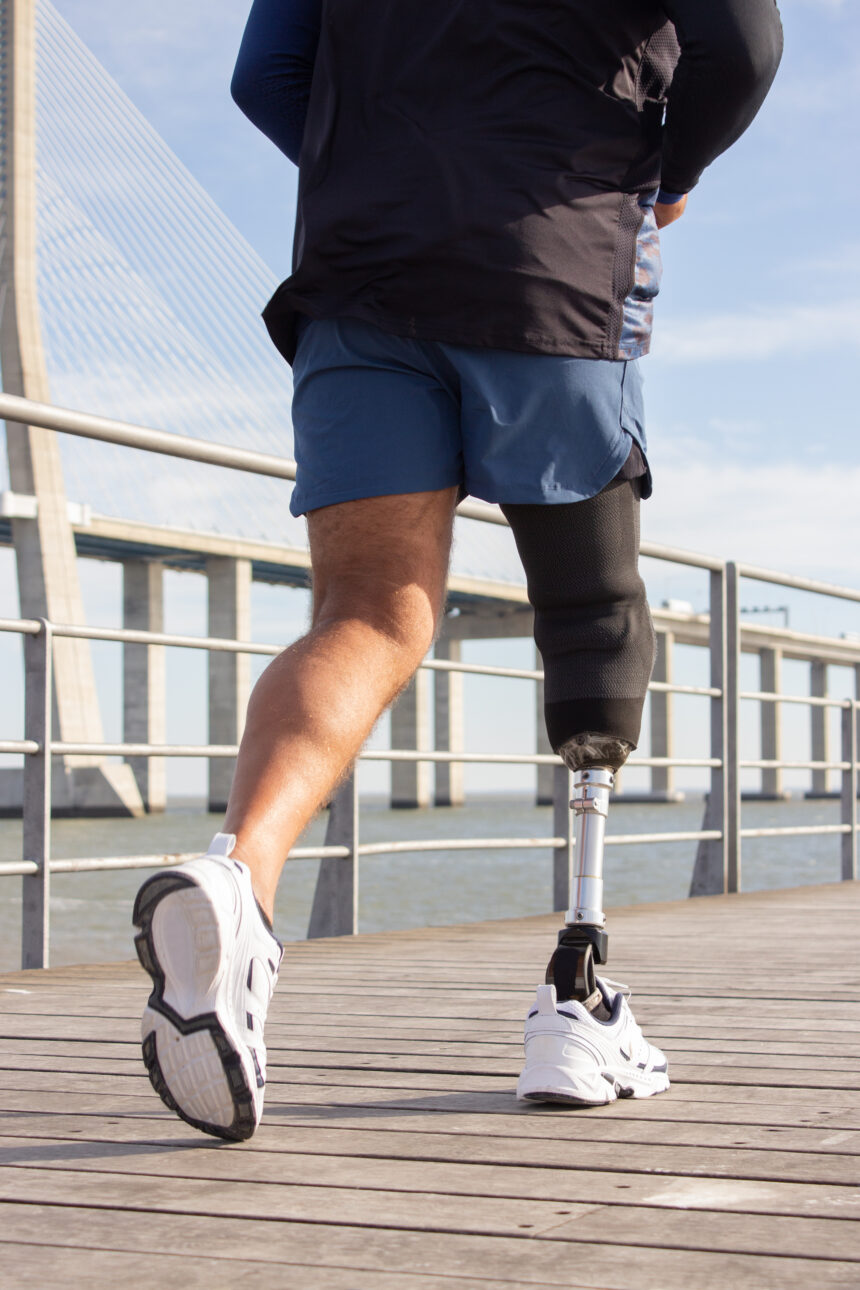Imagine a limb that doesn’t just respond — it evolves with you. AI prosthetics are here to blur the line between biology and technology.
🧠 From Limitation to Liberation
Gone are the days of rigid prosthetics that only sort of get the job done. AI prosthetics are ushering in a future where your device becomes a natural extension of your body. These futuristic limbs do more than move — they think, analyze, and adapt in real time to your unique patterns.
They’re powered by the same kind of learning tech that fuels smart assistants and autonomous cars. But instead of helping you find a restaurant, they help you grasp a glass of water without crushing it.
🔍 How AI Prosthetics Work (No PhD Required)
They Sense, They Think, They Adapt
- Machine Learning Algorithms: These prosthetics collect data from every motion you make. Over time, they adjust to your habits — just like your phone knows your go-to apps in the morning.
- Real-Time Adaptation: Whether you’re picking up a feather or a frying pan, the prosthetic intelligently adjusts grip strength and movement.
- Sensory Feedback: Some models simulate texture and pressure, giving you a sense of what you’re touching — not just that you’re touching something.
“Seriously, these AI limbs are next-level! It’s like having a superpower.” — TikTok user
“Feels like Iron Man tech — but for actual humans. ⚡️” — Redditor
“These are the limbs of the future. No doubt.” — X user
🧬 Why AI Prosthetics Are a Huge Leap Forward
1. Personalized Movement
No two bodies are the same, and now your prosthetic doesn’t have to be generic either. AI prosthetics learn your movement style — how you walk, gesture, reach — and match it.
2. Real Empowerment
This isn’t just about physical ability. With smoother, more natural movement comes renewed confidence in public spaces, jobs, and relationships.
3. Psychological Comfort
When your device feels like it’s part of you, the brain follows. AI prosthetics help bridge the mental gap between machine and self, creating a stronger sense of body integrity.
💡 Real-World Use: Day-to-Day, Transformed
Picture this:
- Morning Coffee: Your prosthetic learns how firmly to grip your favorite mug — no spills, no crushed cups.
- Typing at Work: It adjusts wrist angles dynamically to reduce strain and boost accuracy.
- Walking Your Dog: Real-time micro-adjustments keep pace changes smooth, even when your dog bolts after a squirrel.
These moments — once filled with stress or awkwardness — become second nature.
🧱 The Roadblocks (And the Breakthroughs They Inspire)
💸 Cost
AI limbs aren’t cheap. High-end sensors, robotics, and clinical fitting time drive up the price. But innovation brings opportunity — startups and open-source projects are racing to bring down costs.
🔋 Battery Life
With so much onboard intelligence, battery management is critical. Manufacturers are now exploring solar charging, kinetic energy, and compact power cells.
🔧 Customization Needs
Everyone’s needs are different. That’s why some companies are developing DIY calibration tools via smartphone apps — giving users more control over their limb’s personality.
📱 What’s Next for AI Prosthetics?
📲 App-Controlled Personalization
Future models will let you tweak sensitivity, grip profiles, or feedback settings from your phone. Think: gym mode, kitchen mode, or even “hold my baby” mode.
🔗 Nervous System Integration
Some experimental models are already tapping into neural signals — meaning your brain could directly “think” a movement into reality. We’re officially in cyborg territory.
🌍 Greater Accessibility
Nonprofits and tech-for-good orgs are working to distribute affordable AI prosthetics globally. Mobility should not be a luxury.
🧠 How AI Prosthetics Are Reshaping Society
This is bigger than tech. It’s a culture shift.
These devices are not just correcting disability — they’re redefining ability. We’re entering an age where bionics aren’t just for recovery, but for self-expression and individuality.
Want more context on how human ingenuity meets bleeding-edge technology? Check out BigTrending’s insight into where technology meets human ingenuity — it’s a perfect fit for the movement.
Even Forbes recently profiled companies turning AI limbs from prototypes into scalable solutions. Meanwhile, Wikipedia continues updating its breakdown of neuroprosthetics — worth bookmarking if you want to nerd out on the evolution.
✅ Mini Comparison: Traditional vs. AI Prosthetics
| Feature | Traditional Prosthetics | AI Prosthetics |
|---|---|---|
| Movement | Manual and rigid | Adaptive and intuitive |
| Feedback | None or basic | Simulated tactile sensations |
| Customization | Limited | Highly personalized through AI |
| Learning capability | None | Improves with every use |
| Social Integration | Sometimes awkward | Seamless, natural movement |
📚 FAQs About AI Prosthetics
Q: How do AI prosthetics learn my movement patterns?
A: Through machine learning, they analyze your daily movements and adjust over time for smoother and more personalized function.
Q: Why are AI prosthetics so expensive?
A: They include cutting-edge tech, sensors, and robotics — but pricing is expected to drop as adoption and production scale up.
Q: Can I customize my AI prosthetic?
A: Yes! Many models allow settings adjustments via apps, letting users personalize grip strength, response speed, and more.
Q: Do AI prosthetics feel real?
A: Some models include sensory feedback that mimics real touch, giving you a surprisingly life-like experience.
Q: What’s the biggest benefit of AI prosthetics?
A: They offer independence with intelligence — making every motion smoother, more natural, and more empowering.









